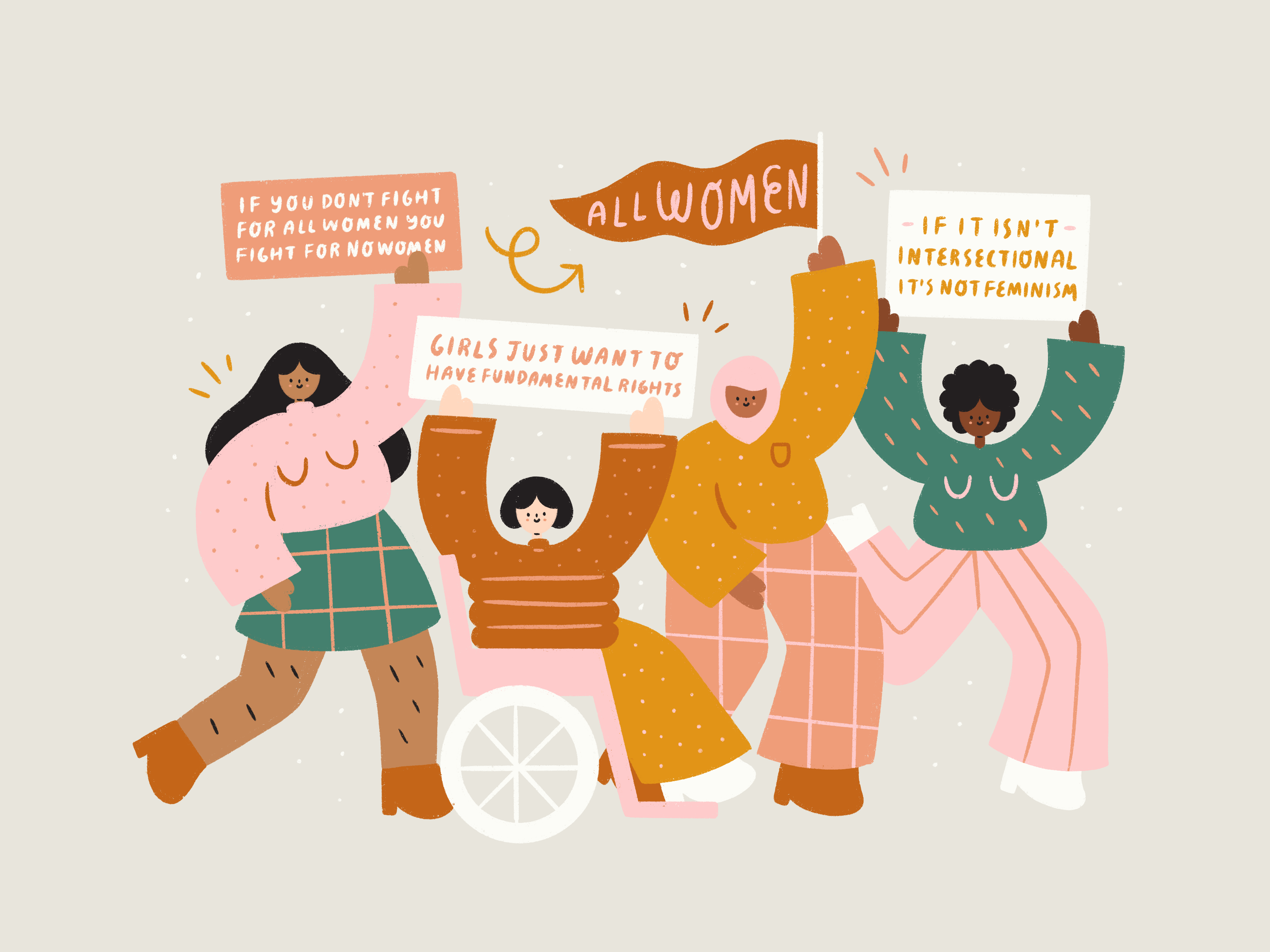I recently watched Moxie and this was a film that I had been excited to watch since I saw the trailer popup on Netflix last month. I found the film engaging and entertaining, if I had to summarise it in a sentence it would be – teenager starts a feminist revolution and falls in love in the process. With important topics highlighted such as the role of men as allies in the feminism movement, the overlooked (and underpaid) successes of female athletes and the ways in which society continues to police and objectify women all discussed within the setting of a high school. However, there was one scene that highlighted a ‘failing’ in the film, the lack of discussion around intersectional feminism.
Let me preface my thoughts by stating that these are my own personal thoughts and opinions right now, and like everything in life this might change after some further reading, learning and re-watching. Furthermore, I am not an ‘expert’ in intersectional feminism, and do not claim to be these are my opinions.
*SPOILER ALERT*
Some scene setting for those who have not yet seen the film.
Vivian, the lead character, inspired by her mother starts a feminist revolution in her school by anonymously publishing a zine. The zine points out the many sexist things taking place in the school, things escalate when school property ends up being defaced culminating in the headteacher suspending Vivian’s best friend, Claudia, who takes the fall rather than snitch on her friend. Up to this point Claudia has had little involvement with the movement staying in its sidelines, something that causes her and Vivian to drift apart. When she did try and join in by wearing a tank top to school in protest of school dress code, her mother made her get changed.
Vivian goes to Claudia’s house to check on her after hearing of her suspension. In this a discussion ensues regarding Vivian’s failure to own up to being the writer of the zine and where Claudia states that Vivian, as a white woman, doesn’t understand the pressures that she faces as an Asian woman. This is followed by Vivian’s shocked face at this statement, Claudia undeterred by said shocked face explains the struggle that her own mother went through to ensure she could go to college and that she doesn’t have the freedom to take the risks that Vivian can take. This is followed by a weak – ‘I’m sorry’ – and like any teen film they ultimately patch things up and hug it out, sweeping under the carpet the earlier conversation.
Now that the scene is set let us talk about the key bit of the film I wanted to discuss.
I know that there is only so much that can be covered in a 2h film but it would have been great to have a meaningful dialogue around the ways in which feminism could strive to be more inclusive. We are told that Vivian’s mom is cognisant that the earlier feminist movement was not intersectional but that is where the discussion began and ended. I should note that this film did have a diverse group of women from transgender, black, latinx and disabled women. We heard of some of their unique struggles but the movement didn’t seem to work together to drive change toward those but rather they became ‘magically’ fixed. Rather the key protesting and campaigning was on the issues impacting the majority of the women. This film in my opinion painted a picture of intersectionality by association, one I must add centred around a white woman.
Claudia’s honesty around the cultural pressures to succeed and the fact that she couldn’t just throw caution to the wind and join in the rule-breaking resonated with me. The daughter of immigrants myself, I too have felt the pressure to repay the sacrifices my parents made by staying within the lines and succeeding in the the manner in which society in-large portrays success – getting good grades, a good degree and a well paying job (whether that is in itself success that’s a discussion for another day). This is why the scene where Claudia officially registered Moxie, therefore allowing them to officially put posters up around the school resonated with me because within her own sphere of power she did her bit. That for me it’s what it’s all about, using your privilege however big or small to do your bit – sign the petition, join that march and call your elected official to effect change.
I wasn’t expecting Moxie to present us with a ‘silver bullet’ to the right type of feminism, but it would have been great to hear an earnest discussion on the intersectionality that would have challenged viewers on the type of feminism they were promulgating and a needed discourse on how we ensure feminism for all women. Having said all of this I applaud what the film set out to do and despite its downfalls in some parts it is the type of content we need more of and I applaud Amy Poehler for what she tried to do with Moxie.
Do let me know what you thought of the film in the comments section, as for me I am going to be reading some bell hooks and others. To learn and unlearn a few things in the ways in which my feminism has not been as inclusive as it can be and what I can do about it.

